Geranium carolinianum, Carolina Geranium
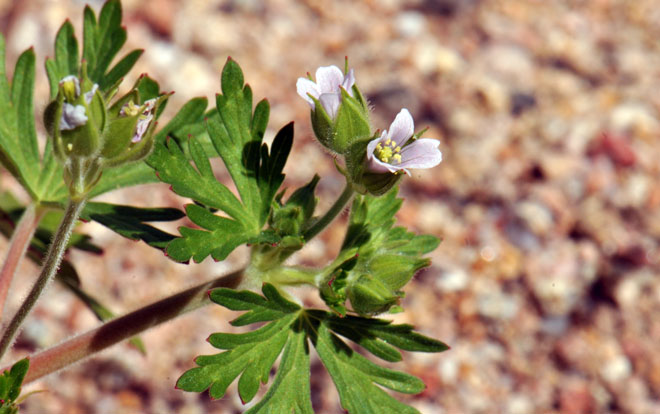
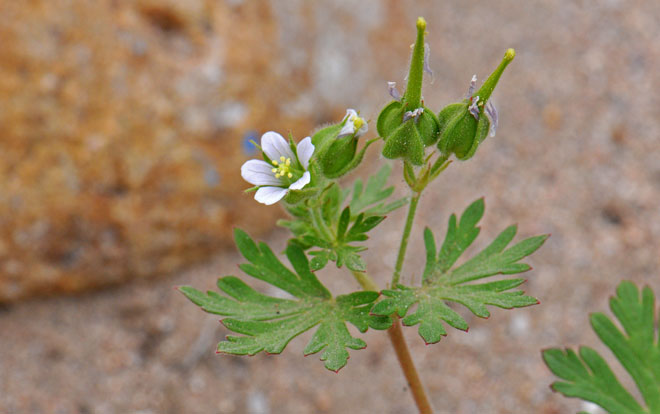
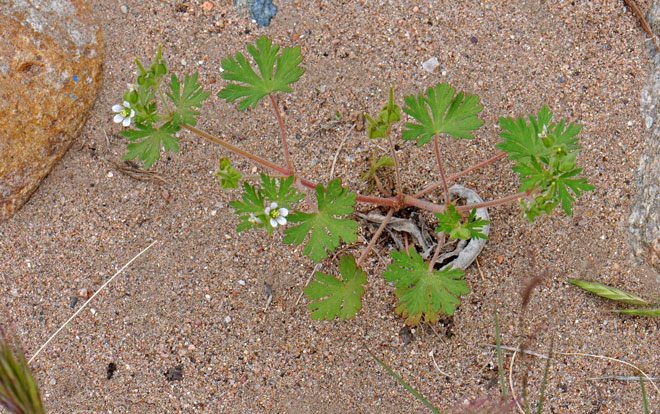
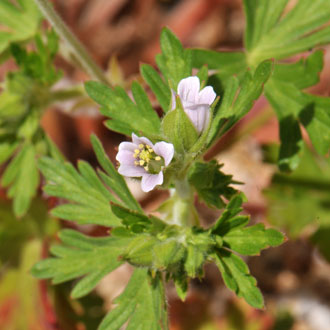
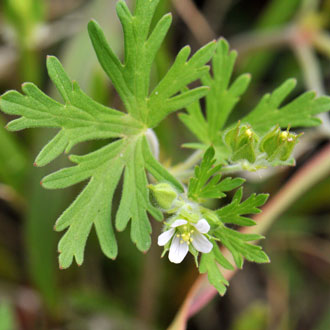
Scientific Name: Geranium carolinianum
Common Name: Carolina Geranium
Also Called: Carolina Cranesbill, Wild Geranium
Family: Geraniaceae, Cranesbill or Storksbill Family
Synonyms: ()
Status: Native
Duration: Annual or biennial
Size: Up to 20 inches tall, usually much less (1 foot).
Growth Form: Forb/herb; small erect branching, herbaceaus plants with dense pubescence.
Leaves: Green; palmate 5 segments or parts.
Flower Color: White, pink or rose pink; 1 or several small flowers in terminal clusters, 5 notched petals and 5 pointed sepals, fruit hairy with a ½ style (see photo).
Flowering Season: April to May.
Elevation: 3,000 to 5,500 feet.
Habitat Preferences: Variable habitats, middle to upper elevations, scrub, forests an dry washes.
Recorded Range: Carolina Geranium is found through most of North America. In Arizona it can be found in the central and southern uplands usually above 3,000 feet.
North America & US County Distribution Map for Geranium carolinianum.
U.S. Weed Information: Geranium carolinianum is listed in: Weeds of Kentucky and adjacent states: a field guide, Weeds of the Northeast, Weeds of the United States and Canada.
Invasive/Noxious Weed Information: No information available.
Wetland Indicator: No information available.
Threatened/Endangered Information: No information available.
The Plant List includes 1,216 scientific plant names of species rank for the genus Geranium. Of these 411 are accepted species names.
Comments: Although a native species, Carolina Geranium is consider a weed by several authorities. In Geranium species 5 of the filaments are usually longer than the others. The styles are persistent often becoming re-coiled as fruit develops.
Also see in Southwest Desert Flora; Pineywoods Geranium, Geranium caespitosum and Richardson's Geranium, Geranium richardsonii.

